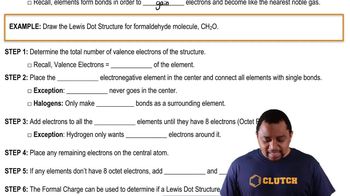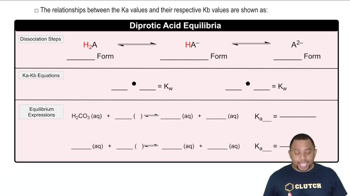Here are the essential concepts you must grasp in order to answer the question correctly.
Neutralization Reaction
A neutralization reaction occurs when an acid reacts with a base to produce water and a salt. In this case, barium hydroxide (a strong base) neutralizes the diprotic acid, meaning it can donate two protons (H+ ions). The stoichiometry of the reaction is crucial for determining the amount of acid present based on the volume and concentration of the base used.
Recommended video:
Lewis Dot Structures: Neutral Compounds
Diprotic Acids
Diprotic acids are acids that can donate two protons (H+) per molecule during a reaction. This property affects the stoichiometry of the neutralization reaction, as two moles of base are required to neutralize one mole of diprotic acid. Understanding this concept is essential for calculating the moles of acid from the moles of base used in the reaction.
Recommended video:
3 forms of Diprotic Acids
Molar Mass Calculation
Molar mass is the mass of one mole of a substance, typically expressed in grams per mole (g/mol). To find the molar mass of the unknown acid, the total mass of the acid sample is divided by the number of moles of acid present, which can be derived from the volume and concentration of the neutralizing base. This calculation is fundamental in determining the identity and properties of the acid.
Recommended video:
Molar Mass Calculation Example

 Verified step by step guidance
Verified step by step guidance


